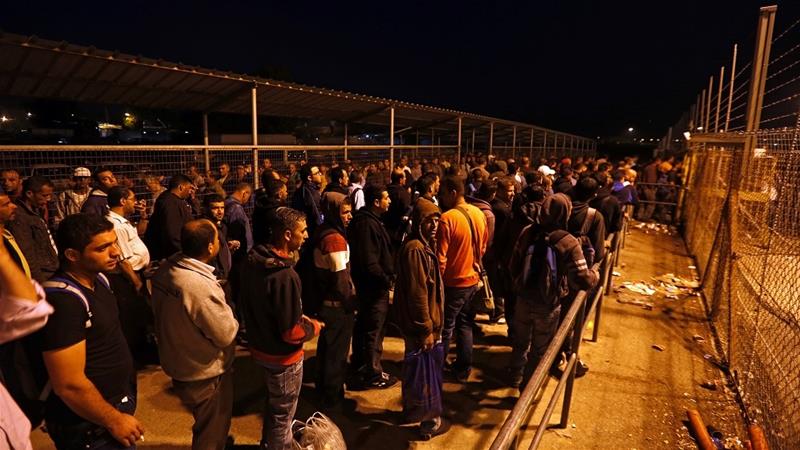This year marks the fiftieth anniversary of the Israeli occupation of Gaza Strip and West Bank, including East Beit-ul Moqaddas. It is the longest occupation in recent history. For the Palestinian people, these have been five decades of de-development, suppressed human potential and denial of the right to development. There is no end in sight, according to this year’s report, on UNCTAD assistance to the Palestinian people.
The report on UNCTAD assistance to the Palestinian people indicates that the illegal occupation has hollowed out the agricultural and industrial sectors and weakened the ability of the economy of the occupied Palestinian territory to compete at home and abroad. With only 1 in 5 hectares of cultivable land utilized and more than 9 out of 10 hectares lacking irrigation—in addition to an import ban on suitable fertilizers, and other restrictions by Israel—agricultural output shrank by 11%, and the sector’s share in gross domestic product fell from 3.4 to 2.9% between 2015 and 2016, un.org reported.
The fact that, today, real GDP per capita in the occupied territory is at the same level as in 1999 is a clear indication of the human cost and lost economic potential resulting from occupation. Economic growth in all sectors is constrained by the loss of land and resources to Israeli settlements and the annexation of land in the West Bank. The situation is further exacerbated by restrictions on the import of essential inputs, which escalate production costs, depress investment and set the economy onto a path of high unemployment and widespread poverty. This looks set to continue in 2017.
High Unemployment
Extreme youth unemployment is a threat to the future of the Palestinian people. In 2016, unemployment in occupied Palestinian was at 27%, and higher still in Gaza, at 42%. These figures would be even greater if discouraged workers who no longer participate in the labor force were included. The report emphasizes that, unless current trends are reversed, unemployment will worsen, per capita income will fall, food insecurity will deepen and poverty will further increase, compounding the risk of political crises fuelled by further economic decline.
Since the onset of occupation, high levels of unemployment in the occupied territory have forced Palestinians to seek work in Israel and in the illegal settlements, under dangerous and discriminatory conditions, often with inadequate health and safety provisions. The report notes that without such jobs, unemployment in the West Bank would be at around 40%, or not much better than the level in Gaza.
The report sheds light on the extremely high rate of unemployment among youth aged 15-29: 27% in the West Bank and 56% in Gaza in 2016. Palestinian youth unemployment rates are the highest in the region. These rates do not take into account the 6 out of 10 young people who have dropped out of the labor market and are no longer seeking employment nor attending school. This marginalization of young people discourages investment in education, lowers the accumulation of human capital and deprives the economy of potential entrepreneurs and creative thinkers. Youth unemployment should be accorded special attention from Palestinian policymakers and their development partners, the report recommends.
Illegal Settlements Expanding
The report notes that the United Nations Security Council, in its resolution 2334, adopted on 23 December 2016, reiterates its demand that Israel cease all settlement activities in the occupied Palestinian territory. However, in 2017, Israel has intensified the expansion of settlements and announced plans to build more housing units. This comes on top of the fact that in 2016, housing construction in settlements was 40% higher than in 2015 and at the second highest level since 2001.
In recent years, population growth in settlements has not only surpassed population growth in Israel but also that of the Palestinian population. The settler population has more than doubled since the Oslo Accords in 1993 and 1995, and currently stands at between 600,000 and 750,000. Moreover, in 2016, Israeli authorities demolished the highest number of Palestinian structures in the West Bank since 2009. This included the destruction of donor-funded humanitarian assistance structures, with damage done to shelters, tents, water cisterns, animal barracks and other basic structures for survival and the maintenance of livelihoods.
Deep Suffering in Gaza
Since 1994, Gaza’s per capita GDP has shrunk by 23%. In 2015, UNCTAD emphasized the dire socioeconomic conditions in Gaza, and the need for significant reconstruction in sectors such as health, education, energy, water and sanitation. However, reconstruction activities have been slow, with only half of the $3.5 billion pledged in 2014 at the Cairo Conference on Palestine—Reconstructing Gaza for Gaza’s reconstruction disbursed and 84% of total recovery needs yet to be addressed.
Today, 80% of Gaza’s population receive food assistance and other forms of social transfers, half of the population is food insecure and only 10% have access to an improved water supply. Meanwhile, Gaza’s electricity crisis means that power was not available for up to 20 hours per day in early 2017. This cripples all economic activities and the delivery of vital services, especially health services, water supply and sewage treatment, the report emphasizes.
The report reveals that the Palestinian economy suffered yet another negative shock, in the form of a 38% drop in donor support between 2014 and 2016, due in part to the fact that occupation prevents previous aid flows from translating into tangible development gains.


